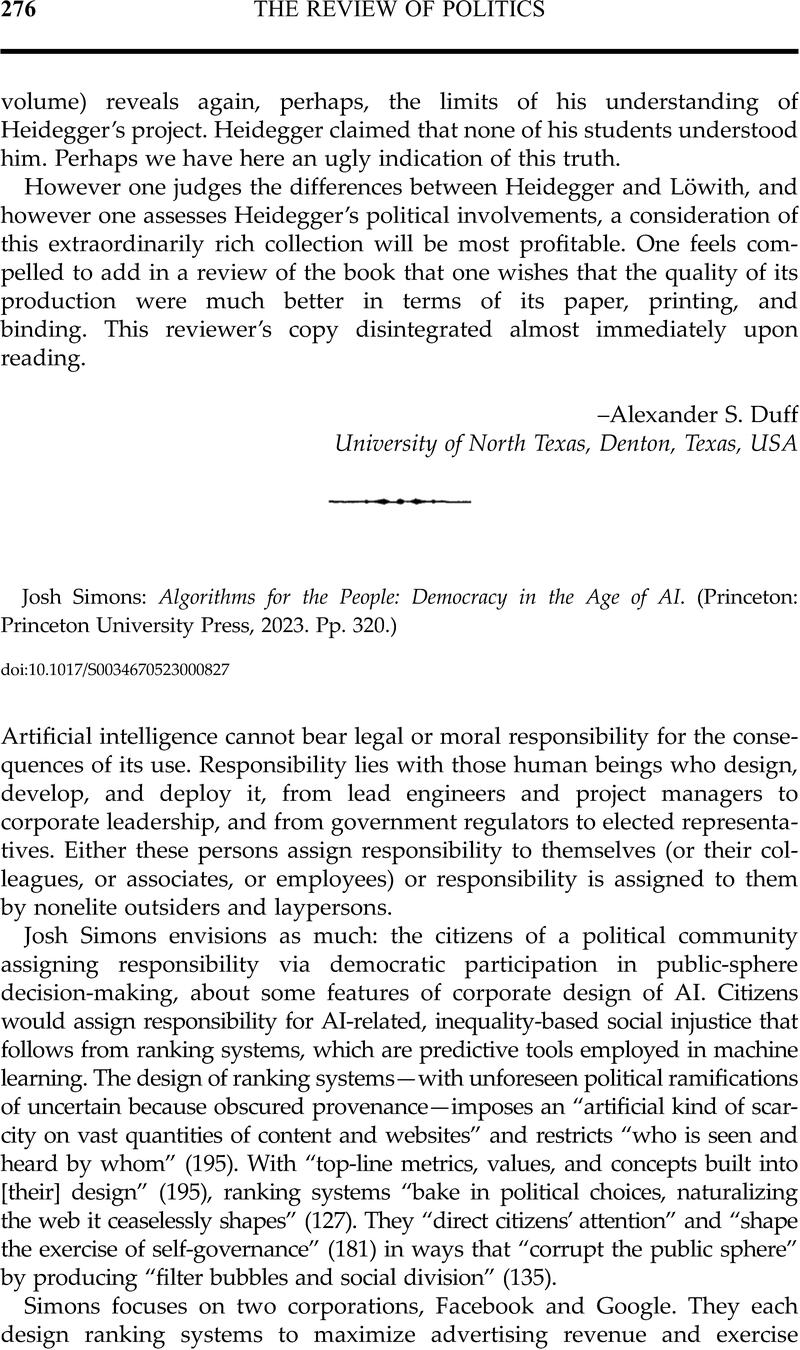No CrossRef data available.
Article contents
Josh Simons: Algorithms for the People: Democracy in the Age of AI. (Princeton: Princeton University Press, 2023. Pp. 320.)
Review products
Josh Simons: Algorithms for the People: Democracy in the Age of AI. (Princeton: Princeton University Press, 2023. Pp. 320.)
Published online by Cambridge University Press: 08 January 2024
Abstract
An abstract is not available for this content so a preview has been provided. Please use the Get access link above for information on how to access this content.

Information
- Type
- Book Review
- Information
- Copyright
- Copyright © The Author(s), 2024. Published by Cambridge University Press on behalf of University of Notre Dame

